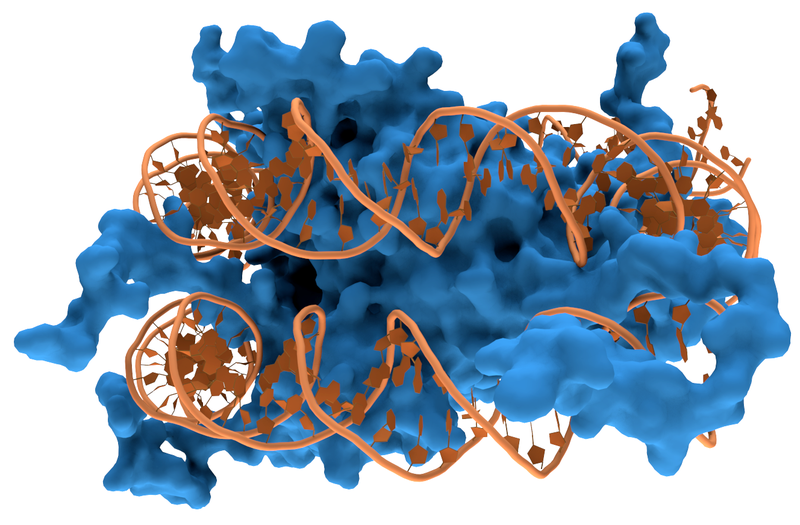DNA Extraction from Cheek Cells¶
Contributed by Martin Fitzpatrick, University of Birmingham, United Kingdom
A Salting Out Procedure for DNA extraction from cheek cells obtained by rinsing the mouth with 25mls of any commercial mouth wash solution available for about 30sec the first thing in the morning. It is important not to brush your teeth before collecting the specimen.

This method was evaluated at the DNA Laboratory, Medical School, Malta. (Mr. Joseph Borg). Histone image by Thomas Splettstoesser
Requirements¶
51ml TE buffer 2ml SE buffer containing 1ul proteinase K and 1% SDS 500ul 6M NaCl 2.5ml chloroform isopropan-2-ol 75% ethanol
Method¶
- Tube containing mouthwash is centrifuged at 4000 rpm for 15 minutes
- Supernatant is removed cautiously by means of a sterile pipette, without disturbing the pellet at the bottom
- Pellet is washed with 25ml TE buffer, by means of centrifigation at 4000rpm for 10 minutes
- Repeat steps 2 and 3
- The pellet is resuspended in 1ml SE buffer containing 1?l proteinase K and 1% SDS
- Incubate at 37oC overnight in a water bath
- Add 1ml SE buffer
- Add 500?l 6M NaCl
- Add 2.5ml chloroform
- Mix for 60 min in an over-the-top rotator
- Vortex for 20 sec
- Centrifuge for 10 minutes at 2000rpm, and set the slowest breaking force
- Transfer the supernatant to a clean tube
- Add an equal volume of isopropan-2-ol to the supernatant to precipitate the DNA
- If DNA IS NOT visible centrifuge the tube for 4 minutes at 11,000g and discard the isopropanol. Add 1ml of 75% ethanol.
If DNA IS visible, spool out the DNA and place in microfuge tube filled with 1ml of 75% ethanol.
- Centrifuge for 4 minutes at 11,000g and discard the ethanol taking care not to lose the DNA
- Add ethanol and repeat centrifugation 2 times. Discard ethanol after last centrifugation
- Evaporate ethanol by placing microfuge tube in oven (max 60ºC) for about 20-30minutes
- Add 100?l of TE buffer to rehydrate DNA, and mix overnight on an over the top rotator.
This method is based, with permission, on an original protocol available here.